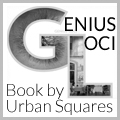
In the 6th century BC, the Greeks colonized the region, but glory days started during the Roman colonization from 1st century BC until the 5th. Today, the Roman Arena in Arles still stands up, only two blocks away from this square, see map and the photo bellow. Circus on the other hand is in ruins.
In the centre of the Place de la Republique the Obélisque d'Arles is erected. It is a 4th-century Roman obelisk first erected in a center of the circus of Arles. After the circus was abandoned in the 6th century, the obelisk fell down and was broken in two parts. It was rediscovered in the 14th century and re-erected on top of a pedestal soon surmounted by a bronze globe and sun. Ornaments on top changed in times of political regimes.
Remaining stones from circus were used for Christian churches and monasteries, among others church of St. Trophime, on this square, former cathedral built between the 12th and the 15th century.
The church is an important example of Romanesque architecture, built upon the site of the 5th century basilica of Arles.
Most importantly this centrally located square in the old city of Arles, is people watching space. I am not sure but it looks like this might be location of the Roman castrum, central city square. Compare with one that we are sure about, Plaça de Saint Jaume in Barcelona.
On nice sunny days, like this one in mid August, everybody is here, including people cooling of at the fountain. Nice example of how cities, and of course public squares as their nucleus, after the glory days passed, adapted and once again become successful and attractive.

| more about evaluation method |
more about types of squares |
||
sociability |
8 |
ceremonial |
x |
uses & activities |
9 |
religious |
x |
access & linkages |
10 |
social |
x |
comfort |
10 |
residential |
x |
image |
10 |
courtyard |
x |
tourist value |
10 |
with park |
x |
total |
57 | street, shopping |
x |



 ...
... ...
... ...
... ...
... ...
... ...
... ...
...